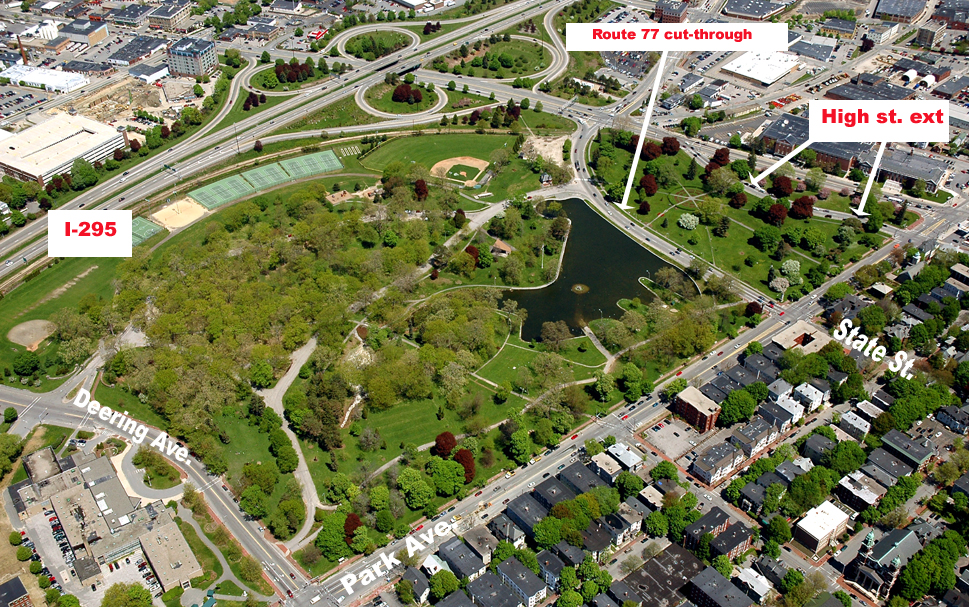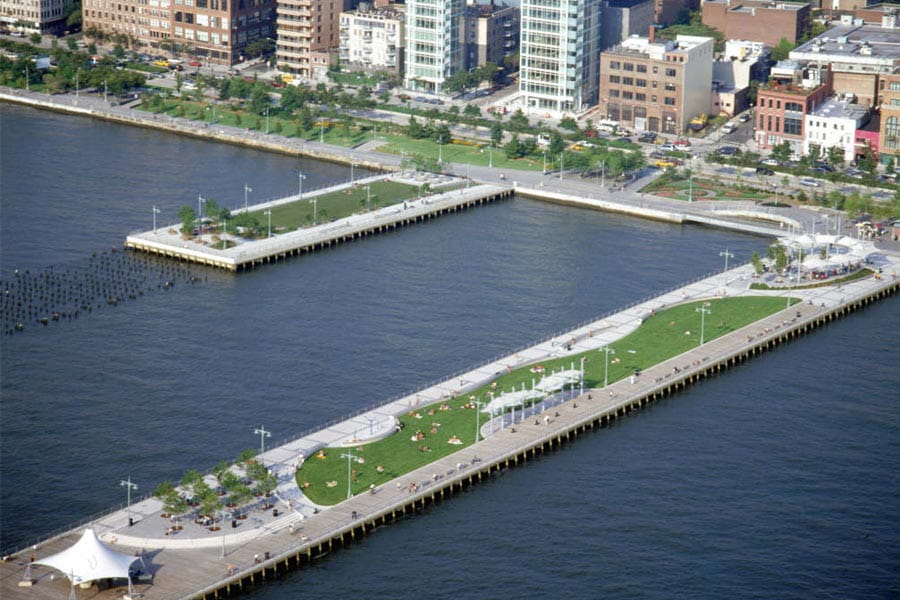Bowdoin’s McKeen Center for the Common Good defines the Common Good simply as something that Bowdoin citizens can use their individual “talents, passions and academic pursuits… for the benefit of society.”¹
My previous blog post argued for the revitalization of the waterfront, specifically piers. I still believe that area of Portland is one of the most feasible locations for change, due to its current run-down condition and proximity to the highly-trafficked and -desirable Old Port. The redesign of this area as a health- and fitness-based park system and new housing development would directly benefit the Common Good by encouraging physical wellness and economic development.
Is it a boon or hindrance that a public park (with appropriate seating, of course2) could provide sanctuary and location to the homeless population? On my trips to Portland I have almost always seen the homeless population utilizing the otherwise rarely attended Deering Oaks Park green, right off the Forest Avenue exit. Is this a use of space for the Common Good? Or would it provide more “Good” as the baseball fields and tennis courts in the park located along I-295? Would the pier parks I am suggesting be “uncontrolled… anarchical” spaces filled with the homeless as Mitchell suggests?3

I believe my proposed pier parks would contribute to the Common Good by providing access to free physical (and subsequently emotional, though a beautiful park on the ocean may alone provide emotional) wellness to all. Due to its proximity to the wealthier neighborhoods and business district of Portland, I do not foresee a shift in the homeless population away from Deering Oaks Park, an area close to the lower-class neighborhoods, shelter, and Preble Street sanctuary. Regardless, my additional proposal to construct middle- and high-class housing, as part of the greater pier system, would further deter a homeless migration. Low argues that the privatization and commercialization of public spaces is necessary to their future and points out that they induce an expected level of class in the public space.4 While this may seem to subvert the “right to the city” as Lefebrev puts it, or “the right to sleep unmolested in a city park”, as Mitchell suggests, I argue that the piers as they now stand offer even less right to the underprivileged.5 Currently, they offer no access, claim, change, or ownership to the homeless or those of lower classes.6 A seafood market, arguably pricey, and a high-end tote bag shop were noteworthy businesses currently inhabiting one pier. My proposed plan would at least extend the rights of access, change, and (temporary inhabitation) ownership for those less privileged.

Looking back at my previous blog post, I mentioned one noteworthy example of a pier that underwent a similar transformation in Philadelphia, Race Street Pier. Looking now to NYC, I would like to point to the success of the Hudson River Park; a public-private redevelopment of “decaying piers and parking lots” that attracts “17 million visitors annually” and boasts attracting $3 billion in new construction in surrounding neighborhoods.6 With these examples from larger cities as our role model, Portland should see the economic and Common Good boon currently hidden by boarded-up, trash-heaped piers.
1) “McKeen Center Mission Statement.” Mission Mission. Bowdoin College, n.d. Web. 30 Sept. 2014. <http://www.bowdoin.edu/mckeen-center/about/>.
2) Whyte, William H. 1980. The Social Life of Small Urban Spaces. Washington, DC: The Conservation Foundation. https://www.youtube.com/watch?v=R6G4B9Z27yA
3) Mitchell, Don. 2014 [2003]. “To Go Again to Hyde Park: Public Space, Rights, and Social Justice.” In The People, Place and Space Reader, edited by Jen Jack Gieseking, et al, 192. New York: Routledge, 2014.
4)Low, Setha M. 2002. “Spaces of Reflection, Recovery, and Resistance: Reimagining the Postindustrial Plaza.” In After the World Trade Center: Rethinking New York City, edited by Michael Sorkin and Sharon Zukin, 164. New York: Routledge.
5) Mitchell, Don. 2014 [2003]. “To Go Again to Hyde Park: Public Space, Rights, and Social Justice.” In The People, Place and Space Reader, edited by Jen Jack Gieseking, et al, 193-194. New York: Routledge, 2014.
6) “About Us | Hudson River Park.” Hudson River Park. Hudson River Park Trust, 2014. Web. 30 Sept. 2014. <http://www.hudsonriverpark.org/about-us>.
